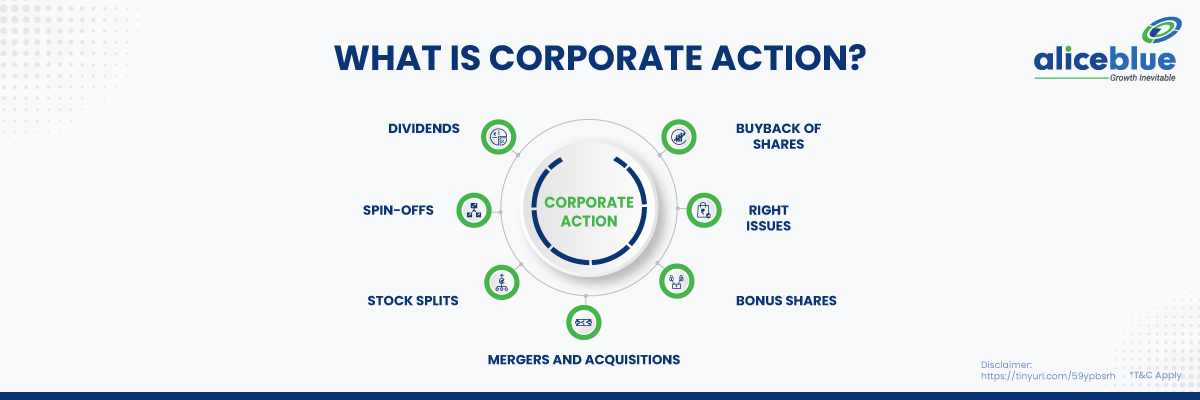What Are Corporate Actions?
In language, corporate actions mean an action taken by a company or a corporate entity that lays a direct impact on a company’s share price. The Board of directors of the company initiates these actions which are approved by its shareholders. The majority of retail simply buys stocks on the announcement of a corporate action, which is wrong. Let’s dig deep into the realm of corporate actions as you would learn in a stock market institute in Noida
Types of Corporate Action
- Bonus Issue
Let’s
understand bonuses through an example:
If
someone had bought 1,000 shares of Infosys in 2003, and not invested
thereafter, his current shareholding is 16,000 shares of Infosys. Surprised?
The number of shares increased because of the bonus shares issued by the
company in the past 20 years. A bonus issue is a share given as a reward
to existing shareholders to distribute gathered reserves instead of giving
dividends. This also makes the share price affordable for small investors.
There is no change in the face value of the share.
- Stock Split
One of
the most intriguing ways of reward distribution from companies is- splits. Yes,
you heard it right!
A stock
split doesn’t mean that the stock will get divided, rather the number of held
shares gets split! It is like a bonus where the number of shares increases, but
the investment amount remains the same. In the split, the company reduces the
face value of the stock in the same announced ratio.
- Right Issues
When a
company needs additional capital for its operations, sometimes it approaches
its existing shareholders for extra funds via the rights issue. The
shareholders have a choice and not an obligation to subscribe to the right
issue. The company allots the shares in a proportion of their shareholding.
Let’s take an example; If the company announces a 1:2 Rights Issue,
it means for every 2 held shares, the shareholders can apply for 1 additional
share.
- Dividends
To be put
in simple words, dividends are compensation to shareholders for their trust and
investment in the company. The companies pay dividends from the surplus profits
they earn from their business on a per-share basis.
- Buybacks
When
promoters of a company want to invest in their own company, they issue a
buyback. This directly affects by reducing the liquidity of shares. This is
because, with buyback, the number of outstanding shares available to trade in
the markets gets reduced. Sometimes companies issue buyback at a premium to the
markets, which is perceived as a very lucrative short-term profiting trade for
both traders and investors.


Comments
Post a Comment